|
|
Prepared
presentations***
Click links below to
go to:
General Topics
Art
Topics by Time Period
Talks
Focusing on Special Artists
|
Major
Museums
(choose 1 or select a series)
Each
illustrated talk explores the most important works in the greatest
art museums in the world. The images presented will
bring back fond memories of artworks familiar to you and give ideas for
what to look for in future visits to these museums.
Museums in the US
Art Institute of Chicago
Barnes, Philadelphia
Cincinnati Museum of Art
Cleveland
Museum of Art
Detroit Institute of Arts
Jewish
Museum, New York
Metropolitan Museum of Art,
New York
Museum of Fine Arts, Boston
Museum of Modern
Art, New York
National Gallery of Art,
Washington, DC
Toledo Museum of Art, OH
Museums in Austria
Kunsthistorisches Museum, Vienna
Museums in
France
Musee du
Louvre, Paris
Musée d'Orsay, Paris
Museums
in Germany
Gemaldegalerie, Berlin
Museums
in Italy
Borghese, Rome
Uffizi, Florence
Vatican, Rome
Museums in the Netherlands
Rijksmuseum,
Amsterdam
Van Gogh Museum, Amsterdam
Museums in Russia
Hermitage
State Museum, St Petersburg
Museums in Spain
Prado,
Madrid
Museums in the UK
British Museum, London
National
Gallery, London
Tate, London, Liverpool, St Ives |

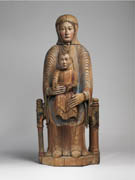
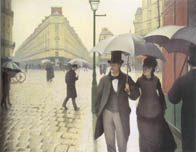
|
|
Looking at Art
with the Eyes of an Artist
Arthur Schopenhauer said: Treat a work of art like a prince: let
it speak to you first.
Georgia O'Keeffe wrote: Nobody sees a flower, really – it is so
small – we haven't time, and to see takes time, like to have a friend
takes time.
In this richly-illustrated presentation we’ll explore how to get a
work of art to speak, how to visit a museum, and how to make friends
with the art you see.
|
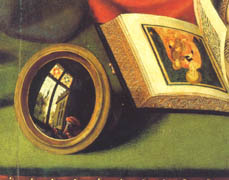
|
|
American
Art Collectors of Art
and their Treasures
(choose 1, 2 or the series)
Collectors usually have very personal reasons behind their choices of
what to buy. In this series we'll look in depth at the art and
tell the stories behind the collections put together by three American
collectors.
Duncan Phillips of Washington DC whose collection became America's first museum of
modernist art.
Alfred C. Barnes who
built the Barnes Collection into a unique educational institution, now
controversially moved from his house and rehoused in a beautiful museum
in Philadelphia.
Richard Manoogian who,
with his wife Jane, built an outstanding collection of American art they share with museums in Michigan and elsewhere.
|
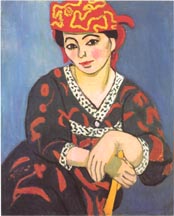
|
|
The
Art of Flowers
Artists
over the centuries and across cultures have depicted flowers for
a number of reasons, not least their inherent beauty. Georgia
O'Keeffe painted flowers close up and large to get even busy
people to notice them. Other artists used flowers symbolically.
Flowers can speak of love,
transience or death. This presentation looks at a wide variety
of flowers in art.
|
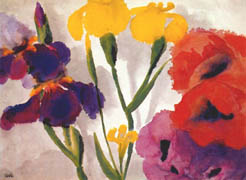
|
|
Feasting on Art
This
presentation brings an art feast for
your eyes, complete with ingredients, cooking pots, helpful
servants, serving dishes, tables laden with food to sample, and
paintings of others enjoying meals including the ultimate
Thanksgiving dinner by Norman Rockwell. Bon appetit!
|
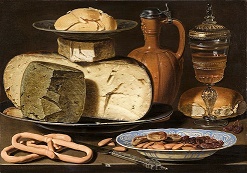
|
|
The
Art of Garden Design
Alexander
Pope in 1734 argued that "all gardening is landscape
painting. Just like a landscape hung up."
This presentation will discuss how art has impacted
garden design and will explore famous gardens from a variety of
times and continents including gardens created by artists. Plus
a look at the work of Piet Oudolf including his garden
on Belle Isle.
|
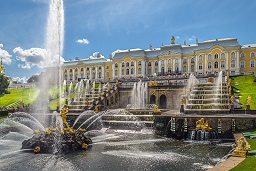
|
|
Claude
Monet and his Gardens
Impressionist painter Claude Monet was an avid gardener painting
with flowers from wild poppies to hybrid gladioli and Japanese
waterlilies. He called his garden his most beautiful work of
art. We’ll talk about his garden ideas as we look at paintings
he did of gardens he had a hand in designing and those of
Giverny, the one he called his greatest masterpiece, along with
photographs of how Giverny looks now.
|
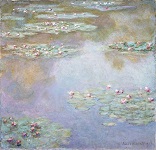
|
|
Architecture
in Detroit and Beyond
(choose any 1 or 2 talks, or the series)
These
talks look at buildings from Detroit's rise in the late 19th
century to today.
The last talk in the series takes us beyond Detroit to deal with
a Detroit architect who changed the face of cities and towns
from Detroit to Novosibirsk.
Detroit Architecture: Then and Now
Detroit has seen the resurrection of a church as an art and
community center, the restoration of an acoustic gem, and the
return of a building on the old Hudson's site. This richly
illustrated presentation looks mostly at historic buildings in
Detroit concentrating especially on those that have been
restored, renovated, or repurposed. Included in the discussion
will be buildings by architect Louis Kamper, the engineering and
design innovations of Albert Kahn, and the design principles of
Wirt Rowland.
Detroit Architecture: Sacred Spaces Detroit's churches have interesting histories, varied
architecture and beautiful stained glass windows. From the mid
1800s to the Great Depression Detroiters built one magnificent
house of worship after another. We'll explore a selection from the
earliest surviving ones, Saints Peter and Paul Church and the
Mariners' Church on to later even more beautiful churches.
Detroit's Architect: Albert Kahn - Temples,
Factories and More looks at some of
the more than 400 structures Albert Kahn built in the Detroit area
then goes beyond Detroit to trace how
this modest immigrant with only an elementary school education
went from obscure beginnings to world renown. His innovations
changed how factories were built and were crucial for the rise of
the auto industry and in enabling the US to become the Arsenal of
Democracy.
|
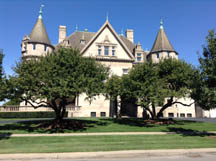

|
|
Detroit
Architecture in Focus
Detroit is growing again. We'll
focus on three special figures in the history of Detroit's
architecture by looking at the buildings of Louis Kamper, the
engineering and architectural innovations of Albert Kahn, and
the design priciples of Wirt Rowland. Along the way and in
closing we'll look at renovations of old buildings and plans for
new ones.
|
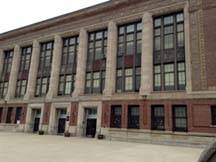
|
|
The
Saarinens: A Designing Family
Saarinen House at Cranbrook
exemplifies Eliel Saarinen's belief that an architect's mission
is total design from the building and its setting down to the spoon
on the table and every other detail.
He believed in including his talented family in the design
process. This presentation focuses on Eliel Saarinen's buildings
at Cranbrook but begins in his native Finland and branches out
to include designs by Loja, Pipa, and Eero Saarinens.
|
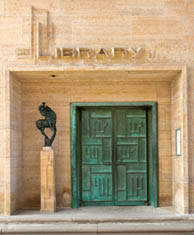
|
|
Daniel
Libeskind: Architect of Memory
Daniel Libeskind was born to
Holocaust survivors in a homeless shelter in Łódź. After
teaching for 16 years as director of architecture at Cranbrook,
he built his first building, the Jewish Museum in Berlin. Like
it, many of his buildings deal with memory of trauma. A skilled
musician, Libeskind says, “In music you can see the instrument
but the music is invisible. It’s the same in architecture. You
can see the building but the atmosphere it creates, the power of
the building, is what we feel emotionally.” He uses his
architecture to tell stories and create emotions relating to the
purpose of the building, so he doesn’t have a signature style
but creates buildings that are sometimes confrontational but
always memorable.
|
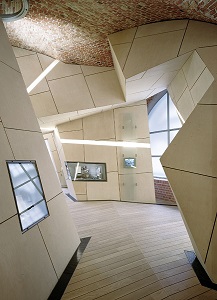 |
|
Frank Gehry:
Big Dreams and Big Fish
His father thought Frank was a
dreamer who would never amount to anything. It took till age 68
for Gehry to rocket to fame with the Getty Museum in Bilbao.
We'll trace his story, fish and all!
|
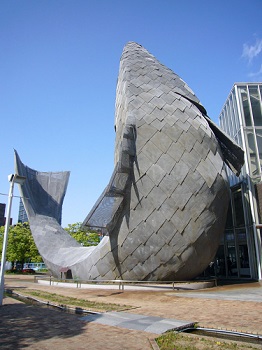 |
|
Sensational Selfies: How
Artists Picture Themselves
(1 talk or series
of 3)
Living as we do in an age of selfies
it is worth exploring how and why artists depicted themselves.
Looking at fascinating images in a wide variety
of media from ancient times to
today, we'll discuss the changing cultural framework within
which self-portraits were made. Included will be artists who
inserted themselves into
scenes with others, those who depicted themselves at work or at
special moments in their life, those who took close looks at
themselves over their lifetimes, and even some who show
themselves as someone else be that saint or sinner.
|
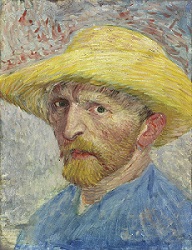
|
|
The
British Royals
A
historical look at a selection of monarchs from Alfred the Great
to Charles III with plenty of pictures and stories of
royal objects and events from births to burnt cakes, crowns to
christenings, marriages to mistresses, and palaces to privies.
Bring your coronets and pearls.
|
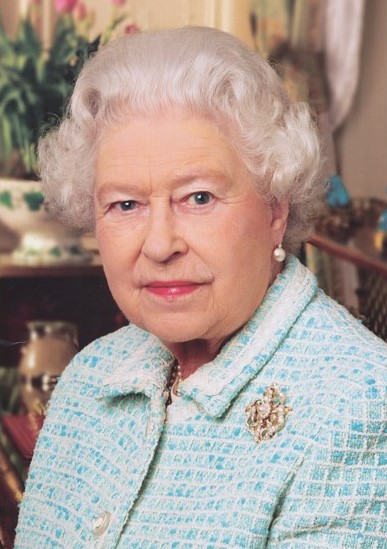
|
|
The
Real Downton Abbey
and Other Stately Homes of Britain
What's
a Wyvern? Why did the Prince of Wales want a portrait of
Mrs. Musters? Explore the art and the stories from
Highclere Castle, the location and inspiration for Downton Abbey
TV series plus more stories, art and landscaping from other
stately homes. You'll find truth stranger and every bit as
salacious and exciting as the fiction.
|
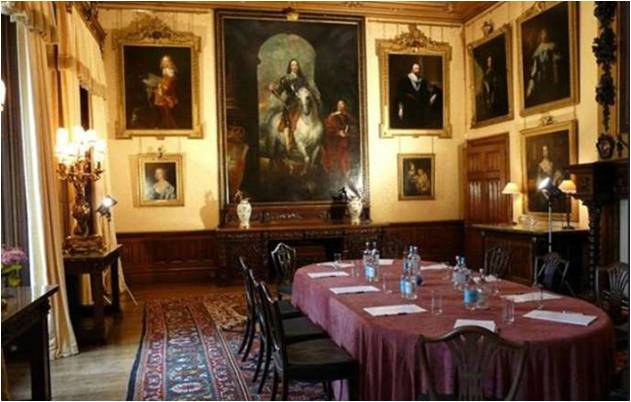
|
|
Skins,
Skeins and Stitches:
Fabric Art through the Ages
There
is evidence of weaving back in the Stone Age. Since then we have
wrapped ourselves in fabric, walked on carpets, and decorated with
embroidery and tapestries. Long dismissed as mere craft, skills
in traditional fabric making and decorating have now been
embraced as art by museums and adopted by artists as
appropriate ways to create art and express their ideas. We look
at a range of examples over time and across continents.
|
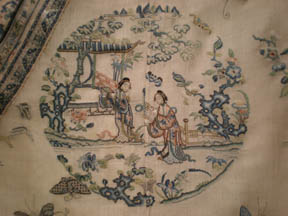
|
|
Stitching
Stories:
Fabric Art through the Ages
Quilts,
samplers, embroidery, and appliqué have been used to tell
meaningful stories, some historical, some religious, some
personal ,and many not only beautiful but deeply moving. We'll
explore a range of stitched examples from the Bayeux
Tapestry, ritual textiles, and samplers to the Fabric of
Survival and other stories in 20th century samplers, quilts
and embroideries.
|
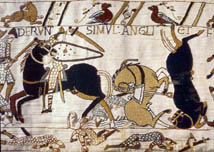
|
|
From
Mud to Magic:
Ceramics through the Ages
This
presentation takes a trip through the
history of working with clay from stone age sculptures, through
delicate porcelains, to the studio potters of today. Since Detroit
is home to Pewabic pottery we'll take a special look at the work
of its founder Mary Chase Perry.
|
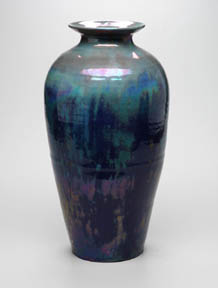
|
|
A History of Glass Making
Fragile and beautiful, glass has inspired
artists ever since people in Mesopotamia 5000 years ago
discovered how to make it. We'll look at examples of glass from
ancient times, through the revival of luxury glass in
Renaissance Europe, to the contemporary studio art glass
movement. |
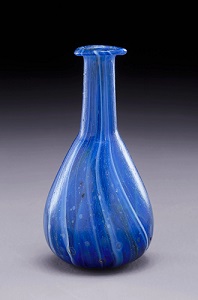
|
|
Experiencing
the Spiritual through Art
People from cultures around the world and over the centuries have found the
sacred in art and have used
art to encourage spiritual experiences. While showing art from
various faiths as well as secular art, this presentation will
suggest ways in which you can engage more fully with art in
order to experience its spirituality more deeply.
|
 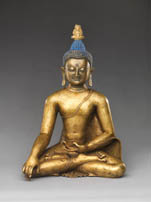
|
|
Art Controversies
Old and New
(Single
talk or 3-part series)
Art has caused controversy over the centuries for a variety of
reasons. We'll explore some of the issues, such as: Does art
require craftsmanship and fine materials? Is modern art
something your child could do? What is the line between art and
pornography, art and sacrilege, art and propaganda? Who chooses
the canon? Should public art require public approval? Should art
plundered long ago be returned?
|
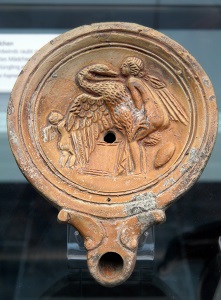 |
|
The
Detroit Institute of Arts:
Detroit's Cultural Treasure House
(single talk or series of chosen museum collections)
Explore the more than 125-year history of one of the world's great
public art museums with this entertaining slide lecture on the striking
personalities, generous donors and notable acquisitions that have made
the DIA the jewel in Detroit's cultural crown.
Additional talks in the series look in depth at the art in the
collection: Choose from particular collections within the
museum: European painting, European sculpture and decorative art;
American art; Asian art; Modern and Contemporary Art; African-American Art;
Prints, Drawings, and Photographs; Rivera Court; and Art from the Ancient World.
|
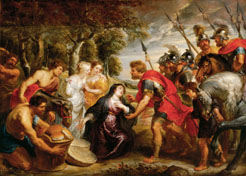
|
|
Tricks
and Treats in Art
Spooks
and scares, tricks and treats are part of the fun of Halloween
and of this presentation. It will focus on the tricks artists
use to bring you their treats. But there will be plenty of
spooks and scares too. Prepare to be terrified!
|
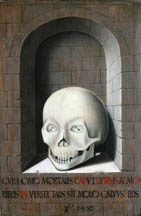 |
|
Telling
a Story:
The Art of Illustration
(pick a single talk or the series)
Artists
created images to illustrate stories on ancient scrolls, in
medieval manuscripts, and in printed books and magazines.
This
series covers a wide range of the best illustrations as a way to
demonstrate a picture is worth a thousand words and that
illustrations can be very fine art.
Introduction
to Illustration Artists like Albrecht Durer, Henri Matisse,
and Marc Chagall produced their own illustrated books. We'll
look these as part of a wide range of images illustrating
stories.
Norman
Rockwell: America's Storyteller No one has captured American
life more vividly than Norman Rockwell. We'll explore several of
his memorable covers for the Saturday Evening Post as
well as a selection of other work from his long and productive
career.
Illustrations
in Books for Children Some of our most loved illustrations
are in books for children. We'll look at examples from late 19th
and early 20th century illustrators, like Randolph Caldecott and
Beatrix Potter, to contemporary award winners like Maurice
Sendak, Mo Willems, and Leo Lionni.
|
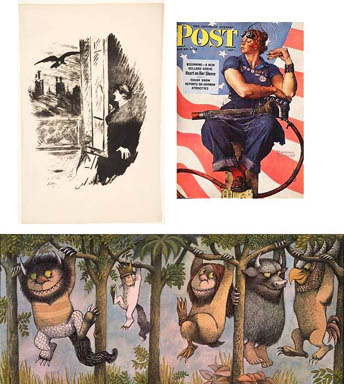
|
|
Cities
for Art Lovers
(choose 1 or select a series)
Each
talk in this series looks at the best art and architecture to be seen in
public places and museums, the well-known ones as well as others
less well-known.
You
will enjoy the images presented whether you are looking for ideas
for future visits, want to remember past joys or just sample the
best art the world has to offer.
1. Berlin
2. Boston
3. Chicago
3. London
4. Paris
5. Madrid
6. Rome
7. Vienna
8. Washington DC
|

|
|
Art Controversies Old and New
(single talk or 3-part series)
Art has been
controversial over the centuries for a variety of reasons. We'll
explore some of the issues, such as:
Does
art require craftsmanship, beauty, or fine materials?
Is it the artist's mind or his hand that is crucial? What
about art done with help from assistants or optical devices? Is Impressionism
a "mess of palette scrapings" as a critic claimed? Is modern art something your child
could have done?
Where is the line
between art and pornography, art and sacrilege, art and vandalism, art and
politics?
Who
chooses the canon? Should governments fund art? Should
public art require public approval? Who should keep art plundered
long ago?
|
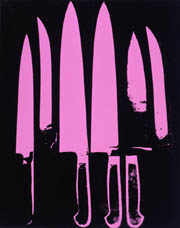 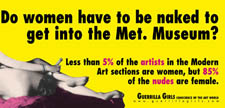
|
|
Magical
Multiples: The Art of the
Print
(single talk or 3-part series)
Prints
have intrigued us since the first woodcuts.
Since prints have their own particular aesthetics, artists from the fifteenth century to today
explored the visual
possibilities of printmaking. We'll
talk about how different prints are made and look at a rich variety of fine
artworks from inventive printmakers such as Albrecht Durer, Rembrandt,
Goya, Kathe Kollwitz, Edvard Munch, and Mary Cassatt.
|
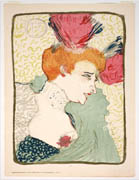
|
|
The Good, the Bad, and the Ugly
Women in Art
(single talk or 3-part series)
Over the centuries, men making art have portrayed women
for the delectation of male patrons. The artists tended to show women either as goddesses or evil temptresses.
This lavishly illustrated lecture or lecture series looks at how the male gaze has rendered the
female and explores the changes when women have the chance to
become artists themselves.
Session 1:
How the male gaze has rendered the
female over the centuries
Session 2: Women struggle for a place in the art
world (15th though 19th century)
Session
3: Women artists get to speak for themselves (20th century)
|
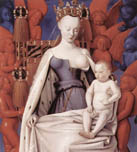
|
|
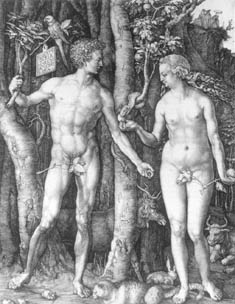
|
Saints
and Sinners
We all love
stories.
This illustrated presentation looks at tales of
villains and heroes from various cultures as pictured by
artists. From ancient times on artists have considered
examples of virtue and vice a prime source of inspiration.
We'll look at a range of responses from serious to romantic, and
devout to irreverent.
|
|
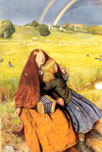
|
English
Accents
Perhaps you think English art is like
English cooking – boring!
Not so, as you will find out with this journey from Old Masters like
Hogarth and Turner to the sensational, even scandalous, Young
British Artists and Turner Prize winners of today. |
|
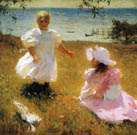
|
Color in Art
series:
(choose 1 or select to form a series)
Each
illustrated talk explores the use of color in art in terms of its effect
on composition or mood, its symbolism, and the periods in art when a
particular color becomes prominent. (1)
Seeing Red
Would you wave a red flag at a bull? Artists explore the power
color has to impact us. Red demands attention. It suggests
emergency; it signifies emotion and passion. Join Wendy Evans in
exploring a variety of art i which red plays a special role.
(2) Reflections on White
Artists explore the power color has to impact us. White attracts
our eyes. It was loved by Impressionists because it reflects the
colors around it. It suggests purity and peace. This
presentation explores a variety of ways, some good, some
invidious, in which the color white has played a role in art. |
Art of particular
time periods
|
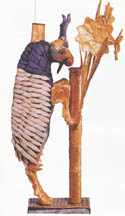
|
The Art and Ideas of the Ancient World
4 part series or any individual class
Explore the ideas underpinning the art and architecture of the ancient
cultures of Mesopotamia, Egypt, Greece and Rome. The region had such a
huge influence on western art it was labeled the Birthplace of
Civilization, but perhaps is now becoming its graveyard. |
|
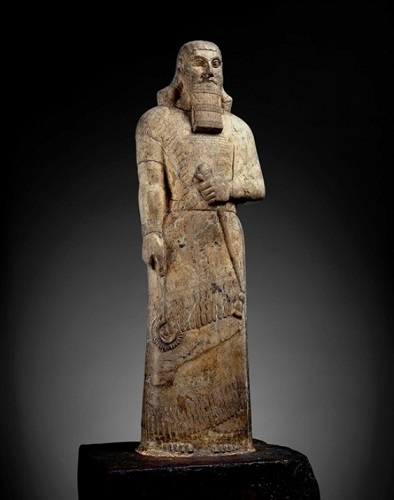 |
Mesopotamia:
Cradle of Civilization
The Iraq war, rise of ISIS, and other
conflicts in the Middle East are causing terrible human
tragedies. There is also a wealth of history that is under
threat of loss or destruction as Iraq, Syria and other countries
in the region are full of world heritage sites, museums, and
archaeolical areas yet to be fully explored.
This illustrated talk will explore the ideas, inventions, and
that led Mesopotamia to be dubbed the birthplace of
civilization. We'll look at the archaeological discoveries that
excited Europe in the 1920s and discuss the challenges the art
and architecture face in the region today. |
|
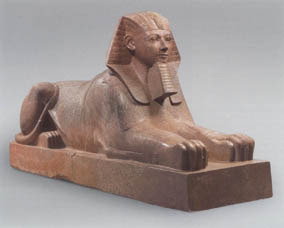
|
Continuity
Forever:
The Art of Ancient Egypt
This talk will bring
3000 years of ancient Egypt to life in all its glory.
We'll resurrect a people who loved life and worked to ensure they could continue to live
life to its fullest even after death. As Tjaiemhotep urged "Cease not to drink, to get drunk, to
enjoy making love, to make the day joyful, to follow your inclination day and night, do not allow grief to
enter your heart." |
|
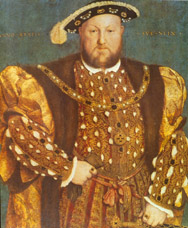

|
British
Accents
A
richly-illustrated survey of art in Britain from the 1550s when
Tudor monarchs hired painters from Europe to the work of
contemporary artists like Banksy. (Can be single session,
or fuller 2 or 3-week series) 16th though 18th centuries Covering many
forms of art, such as portraits by Hans Holbein the Younger
and Thomas Gainsborough, satirical prints by William Hogarth,
porcelain by Josiah Wedgwood and neoclassical architecture by
Robert Adam. 19th century A rich period for British
art. Landscape painting flourished as did the
precisely-detailed art of the Pre_raphaelite
Brotherhood. Whistler advocated art for art's sake while
the Arts and Crafts Movement sought to improve design. 20th century on The modernist
art of
Europe and the horrors of the Woirld Wars impacted British
art. Pop art started in England. The Young British
Artists championed by Charles Saatchi gained exposure and
created controversy while Andy Goldsworthy and others sought
beauty in nature.
|
|
Making Her Mark: Pioneering Women Artists 1500-1800
(one hour talk, to 1900 for 2 hours)
During the Renaissance
in Europe women began to get acclaim as painters and sculptors
gainingclients and patrons despite the obstacles they faced in
an art world that tended to believe that only men could create
fine art. These pioneering women opened doors for others willing
to struggle in the male-dominated art world. This talk looks at
their work, their lives, and their impact.
|
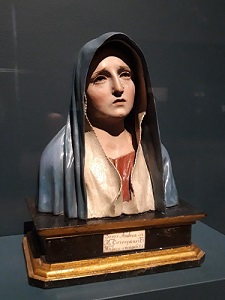 |
|
Titans
of the Italian Renaissance
(single talk or 3-part series)
The
High Renaissance was a brief - 30 year - tranquil period at the end of
the 15th and start of the 16th centuries when the technical mastery to
produce illusionistic art and the desire to make classically- inspired
art came togther in the hands of profound thinkers.
We'll look at a rich variety of images by Leonardo da
Vinci, Michelangelo, and Raphael while exploring their personal stories
and the times in which they lived as well as their contributions to
art.
Celebrities, courted by princes and popes, these men produced
some of the most influential works of western art.
|
 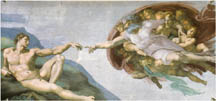
|
|
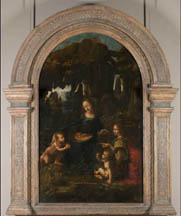 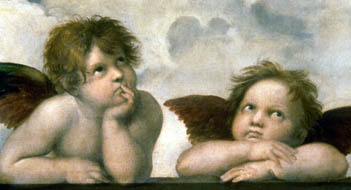
|
Art of the Italian Renaissance
(single
talk or 3-part series)
This
talk or series looks at the changes in art as thinkers and artists moved
from focusing on the soul and the spiritual world to an interest in people and the physical
world. That led in turn to interest in the ideas and ideals of ancient
Greece and Rome. We'll explore reasons for these changes and look in
depth at the artists who made the developments that remain at the core
of Western art for centuries.
|
|
 
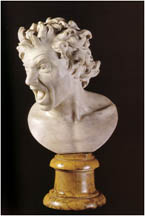
|
Renaissance and Baroque Art
(single
talk or 3-part series)
About 500 years ago
Europe went through a period of exciting change as people awoke to the
wonders of our world and to the ideas and ideals of ancient
Greece and Rome. We will
trace the changes in art brought about by this Renaissance, then go on to
explore the social, religious, and economic reasons causing art to move from classical calm to the dramatic
sensationalism of the Baroque.
We'll try to capture some of the fervor sixteenth and seventeenth
century audiences would have felt confronting the masterpieces created during this era.
|
|
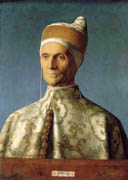
|
Sensuous Poetry:
The Art of 16th
Century Venice
Bellini, Giorgione,
Tiziano – even their names are poetic.
Their art was no less so. Venetian
artists revel in the sensuality of color and the glory of the
female form. Compared to the
Venetians, contemporary Renaissance Italians painted only prose.
|
|
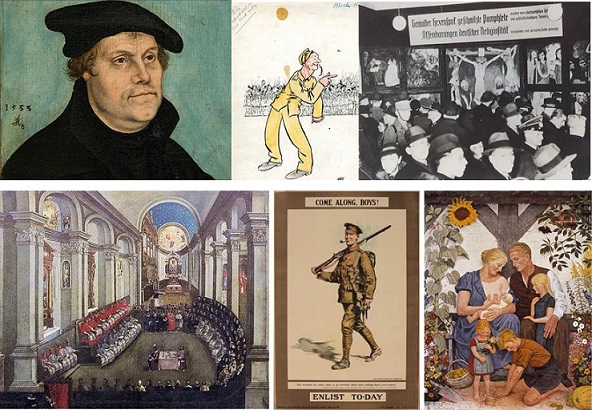 
|
Art in Times of Conflict
(single
talk or 3-part series)
Today
is not the first time art has been destroyed because of beliefs
nor is it the first time art has been employed to promote
political or religious ideas. This series of presentations
explores the role of art in three historical periods.
Art
during the Reformation and Counterreformation
Protestants destroyed art as distracting at best,
idolatrous at worst. The Catholic Church used art to encourage
faith.
Art and World
War I Artists
had official roles in World War I to create recruitment posters
and camouflage, and to spread propaganda, but others used art to
expose the horrors of modern warfare.
Art in the Third
Reich Nazis encourage artists to create art
to celebrate the strength and beauty of Aryans and Germany but
they also used the art they denigrated to promote their
ideology. We'll explore how they used both kinds of art as
propaganda.
|
|
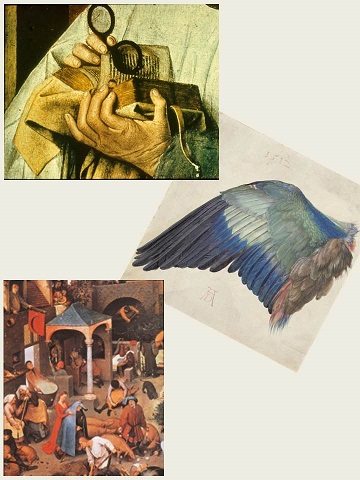
|
Devotion,
Detail and Discovery:
The Mesmerizing Art of Northern Europe
(individual
talk or 3-part series)
Masters of the 1400s
Artists who
painted with microscopic details to
encourage viewers to lose themselves in contemplation of an
image as if they were present at the scene able to touch the
objects and share the emotions of the people depicted.
German art of the 1500s Albrecht Durer brought the Italian Renaissance to
Germany with a northern European twist. We'll focus on
his work but also explore paintings by his contemporaries. The Art of the Netherlands, France and Spain
Netherlandish artists like Hieronymus Bosch and Pieter Bruegel
the Elder brought imagination to the northern tradition of
meticulous detail, while artists in France and Spain (like El
Greco) began to adopt the distortions of Italian mannerism.
|
|
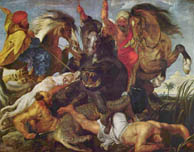
|
The
Sensational Seventeenth Century
(single talk or three part series)
Art
in the 1600s moved from the classical calm of the Renaissance to high drama. I challenge you to look with me at paintings and sculpture by great masters
then tell me
whether you agree that this is art at its most exciting, accomplished and
exuberant.
1. The excitement of Caravaggio and his followers.
2.
The wizardry of Bernini in sculpture and architecture.
3.
Dramatic art of Rubens in Flanders and the quieter brilliance of masters
like Rembrandt, Vermeer and Ter Borch in the Dutch Republic.
|
|
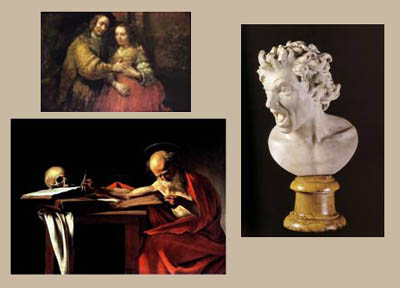
|
Stars
of the Seventeenth Century
Rembrandt, Caravaggio, Bernini
(single talk or 3-part series)
This
series looks in depth at the life and work of three European geniuses, the Dutch master painter and printmaker Rembrandt van Rijn plus
two of his Italian contemporaries, the painter Caravaggio and
sculptor-architect Gianlorenzo Bernini.
All three were immensely skillful and innovative artists whose lives,
like their artworks, were full of drama and powerful emotions.
|
|
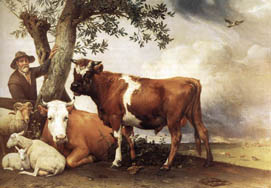
|
The
Golden Age
of Dutch Art
(single talk or 3-part series)
Visitors
to the Netherlands in the 1600s were amazed at the number of paintings
in Dutch homes and businesses. As a wealthy maritime power the Dutch had
the highest per capita income in Europe. Painting served as a way to
fashion Dutch identity. With artists
like Rembrandt, Frans Hals, Rachel Ruysch, Gerhard ter Borch, Judith
Leyster and Jan Vermeer, this class or classes will be rich in visual
delights.
|
|
The French
Revolution:
Art and Ideas
(single talk or 3-part series)
Changes
in ideas and in society are always reflected in art, but during this
period of intellectual ferment as well as revolution, art and discussion
about art impacted history.
We'll
see how the seeds of revolution sown in the courts of Louis XIV and
Louis XV and watered by the ideas of Voltaire, the writings of Diderot,
and the paintings of Jacques-Louis David. Our story continues
through the 1789 revolution, the rise of Napoleon, to the final triumph
of republicanism in France.
|
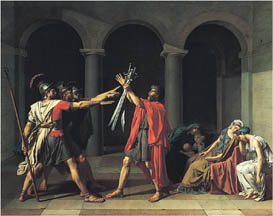
|
|
Century of
Change:
The Art and
Ideas of 18th Century France
The century
began with the Sun King, Louis XIV, ruling as the richest and strongest
monarch in Europe. It ended with France engulfed in the Reign of
Terror.
This talk
traces
the amazing journey from the art of the French aristocracy at the start
of the century, to the art created at the end of the century in the wake
of the French Revolution.
|
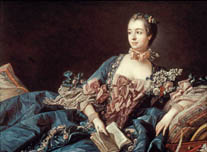
|
|
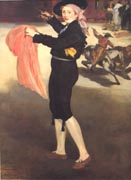
|
Vive
la France! Vive la
Revolution!
A
fully illustrated look at the revolution in art that
took place in France in the second half of the 19th century. This features artists like Gustave Courbet and Edouard Manet who were the
first to challenge academic traditions, then the younger revolutionaries
like Claude Monet and the Impressionists, and on through rebels, like
Vincent Van Gogh, who followed them.
|
|
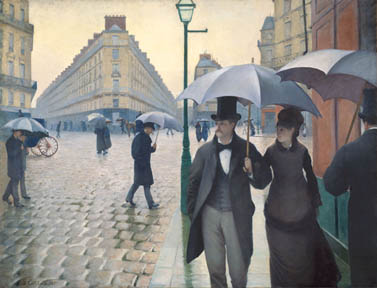
|
Impressionism:
The Art of Seeing
(single talk or 2- or 3-part series)
The Impressionist paintings
so loved today derive from the
rebellion of a few young artists in Paris against the formalism and sentimentality
of academic art in the late 1800s.
This
presentation or series explores the roots of this transformation, looks at works by
artists
like Claude Monet who are most closely identified as Impressionist,
and continues to artists who fell under the Impressionist
spell. |
|
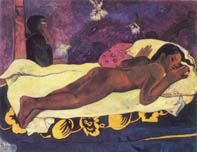
|
Post-Impressionism:
French Art 1886-1905
(single talk or 2- or 3-part series)
Impressionists
introduced a new way of painting in bright colors to try to
capture the brilliance of outdoor light. Artists after them
tended to retain the vivid colors but reject the idea that art
should quickly and spontaneously just depict the world as it
is. Some, like Gauguin and Van Gogh, wanted a more emotional
approach; others, like Cezanne and Seurat, wanted more structure. This series of three classes will explore the
work and ideas of these and other Post Impressionist artists.
Session 1: The Break with Impressionism
(focus on Toulouse-Lautrec and Seurat) Session
2: Structure or Passion?
(Cézanne and Van Gogh) Session
3: From Natural to Subjective
(Gauguin and the Symbolists)
|
|


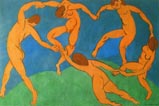
|
The
3 Ms who Changed
French Art:
Manet, Monet and Matisse
(1 talk, separate talks or 3-part series)
This
course offers an in-depth look at three great French artists.
Despite harsh criticism by their contemporaries, their rebellions
against the strictures of academic painting succeeded in changing
the course of Western art.
Session
1: Edouard
Manet who sought to update the Old Masters with contemporary
realism, never understanding why his revolutionary works were so
shocking to his contemporaries.
Session
2: Claude Monet who tried to
capture the transitory nature of
vision, becoming the father of Impressionism.
Session
3: Henri Matisse who wanted to create a world of harmony and
color, an art of balance, purity, and serenity. His
experiments with color pushed the boundaries of art so far that
even his patron called one of his paintings "the nastiest
smear of paint I have ever seen."
|
|

|
American
Impressionism
American artists studying academic art in
Paris in the late 19th century were exposed to Impressionism. At
first most excoriated it as their teachers did - "It was
worse than a chamber of horrors" wrote J. Alden Weir after
visiting the 3rd Impressionist show.
Mary Cassatt was the only American to exhibit with the French
Impressionists. By the late 1880s other Americans were
experimenting with the style and bringing it back to America.
The Ten American Painters made it the most loved style in
America in the first decades of the 20th century. Find out
why it was so pleasing.
|
|
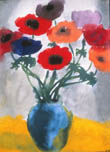
|
Expressionism:
The Assertive Art
(single talk or 3-part series)
This talk or in-depth series delves into the roots
of Expressionism, its flowering in the early 20th century
especially in Germany, and its legacy in Europe and America.
Expressionist artists often rebelled against contemporary social
values and conventions. They rejected traditional art
forms, colors, and refinement in order to communicate ideas and
emotions in intense paintings, sculpture, prints and
architecture.
Session 1:
Roots and Beginnings (in ancient,
medieval and late 19th century art)
Session 2: Flowering and Forbidden
(early 20th
century German Expressionists)
Session
3: Later and Legacy (after 1914)
|
|
Weird
and Wonderful: Surrealism
In the 1920, a number of artists aimed at using art to explore the
irrational, go beyond surface appearances to access the unconscious.
They were known as Surrealists. Many chose to do this by placing
together things that would never be together for real in order to jolt
the mind. We'll explore works by Andre Breton, Salvador Dali, Frida
Kahlo, Rene Magritte and more.
|
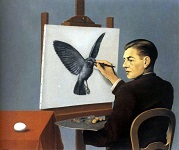
|
|
Opening
Doors, Opening Eyes:
American Art, 1875-1955
(single talk or 3-part series)
This series explores American art from the critical period when it
adapts to the contemporary world and forges modern ideas about art.
Images shown will range from the realism of Thomas Eakins
to the abstraction of Jackson Pollock and from the urban
life scenes of John Sloan and the Ashcan School to the regionalism of Grant Wood.
Discussion will range from the changes wrought by the
Armory Show and the World Wars to the impact of the New Deal
and the Cold War.
|
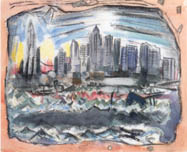
|
|
Picturing
America
(single talk or 3-part series)
America's
art tells America's story - the optimism, struggles, humor and pain. We'll explore how people from the
earliest inhabitants to today have pictured the history and landscape of
the country reflecting its ideas and ideals.
Images will range from realistic paintings of John Singleton Copley
to modern abstractions by Jackson Pollock, from the innocent America
captured by Norman Rockwell in his early work to the struggles of black
Americans seen in his late paintings and those of black artists like
Jacob Lawrence, and from inspiring views of unspoiled country by Thomas
Cole to the lonely cities of Edward Hopper.
These artists, and others whose work we'll see, help build our picture
of
America.
|
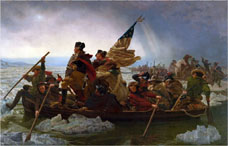
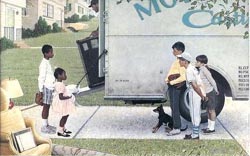
|
|
Unhealed
Wounds:
Art and
the First World War
WWI
was welcomed by artists and intellectuals as the heroic war that would
cleanse society - but it wasn't. It
was the war to end all wars - but it didn't. However
it was a war that still impacts us. Part of that impact comes from its art.
That is the story this talk will tell by looking at paintings, posters,
photographs, sculpture and cartoons from the period.
|
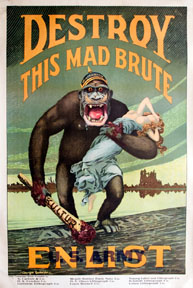
|
|
How
could the Holocaust happen?
(single talk
or 3 part series)
Adolph Hitler understood the power
of art. Nazi cultural policies were inextricably linked to their other goals. This
presentation looks at Nazi approved art as well as art the Nazis denigrated to explore how the National Socialists used art during the Third Reich to promote their ideology and further their racial, social, and military objectives.
|
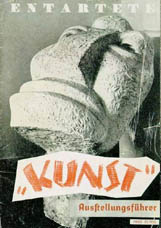
|
|
Chasing Art: Works Stolen by
the Nazis
Many Jewish collectors and dealers were either forced to sell at greatly
reduced prices or had their art stolen by the Nazis. Their heirs have
sought to reclaim the works. The restitution of Gustav Klimt’s Adele
Bloch-Bauer became famous through the movie The Woman in Gold. We’ll
discuss this work and a range of great art from medieval times to modern
along with the process it took to get the art restituted.
|
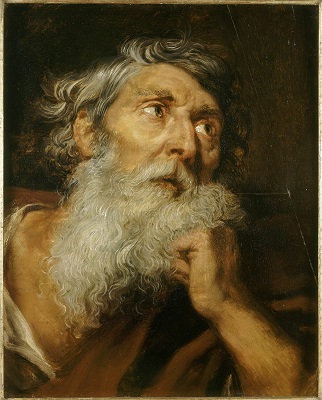 |
|
Beauty and Brutality: Art from the Holocaust
(single talk or 3
part series)
Pablo Picasso declared "We all know that art is not truth. Art
is the lie that makes us realize the truth."
We explore art
created during and after te Holocaust that establishes and
preserves the truth. Art remains a reminder of the bravery and
determination of those who documented the suffering and the
atrocities. It tells poignant stories of escape and expresses
reactions to the horrors.
Their moving images help ensure
the truth is never forgotten.
|
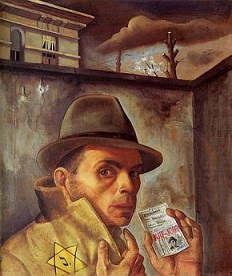
|
|
Monet
to Dali: Birth of the Modern
This
richly illustrated talk presents artists of the late 19th and
early 20th centuries who changed the course of western
art. Looking at works by artists such as Claude Monet,
Paul Cézanne, Vincent Van Gogh, Salvador Dali and Pablo Picasso,
we'll explore the major art movements around the turn of the last
century.
|

|
|
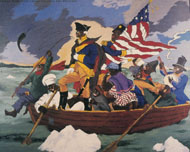
|
New
No Longer: Art of the 20th Century
(single talk or 3-part series)
It
was a time of change, a time when art shocked.
We'll
look at the founding of modern art in Europe early in the
century by artists like Matisse and Picasso in France and the
Expressionists in Germany.
Then we'll move to New York for
the flowering of an abstract approach to art, and end by
examining the satirical, often politically- charged art made
later in the century by artists who rejected the formalist
modern approach to art-making. |
Special Artists
|
Titans
of the Italian Renaissance
(single talk or 3-part series)
The
High Renaissance was a brief - 30 year - tranquil period at the end of
the 15th and start of the 16th centuries when the technical mastery to
produce illusionistic art and the desire to make classically-inspired
art came together in the hands of profound thinkers.
We'll look at a rich variety of images by Leonardo da
Vinci, Michelangelo, and Raphael while exploring their personal stories
and the times in which they lived as well as their contributions to
art.
Celebrities, courted by princes and popes, these men produced
some of the most influential works of western art.
|
  
|
|

|
Revisiting
Rembrandt
In this tribute, we'll
explore the rich art world of 17th century Holland from which Rembrandt emerged, and look not only at his uniquely
sensitive paintings but also at revolutionary prints and drawings created by this master draftsman.
Along the way we'll tell the story of Rembrandt's life, his eclipse and the rediscovery of
this very human artist.
|
|

|
The Passionate art of Vincent van Gogh
Vincent van Gogh put an intensity that was
new into his art. In his short 10 year career he made an impact that
continues to resonate. This talk will increase your enjoyment of the DIA special exhibition Van Gogh in
America on October 2, 2022 through January 22, 2023. We'll look at
the art while exploring his life and
discussing what makes Van Gogh's art so beloved today .
|
|
Paul
Gauguin: Dreaming amid Nature
Art
is abstraction when you dream amid nature
We
can tell many stories about the Post-Impressionist artist Paul Gauguin:
*
How
he turned from banker to impoverished artist.
*
How
he escaped from the "artificial and conventional"
Paris to seek the primitive.
*
How
he fought with Vincent van Gogh over what art should be.
*
How
he went from husband and father of five to seek love from
young girls on
tropical islands.
We'll
touch on all these but focus on Gauguin's emergence from a
mediocre impressionist to a strong original artist who left a
legacy that influenced 20th century artists.
|

|
|
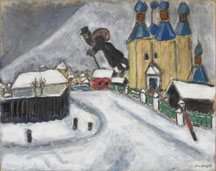
|
Marc
Chagall and the Jewish School of Paris
Early
in the 1900s several Jewish artists, mostly from Central and
Eastern Europe, lived and worked in the Montparnasse district of
Paris. They came to be known as the Jewish School of Paris. This
presentation looks at art by Marc Chagall and by other key
figures in the group, among them Sonia Delaunay, Amedeo
Modigliani, Fernand Léger and Chaim Soutine.
(The
Chagall talks can be adapted as a two part series)
|
|
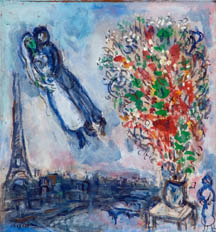
|
Marc
Chagall: Fairy Tales, Passion, and Wonder
Pablo
Picasso said Marc Chagall must have an angel in his head.
Chagall traveled far from the log cabin of his youth in Russia
to make a name for himself in Paris, the art center of the
world. He carried his early experiences with him. They helped
shape his art. This
illustrated presentation explores Chagall's early life, the peak
of his career, and his later life and work in many different
media.
(The
Chagall talks can be adapted as a two part series)
|
|
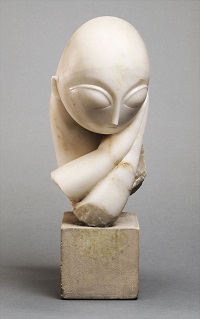 |
Constantin Brancusi: Painter of Pure Joy
Brancusi said
about his sculptures, "Don't look for obscure formulas or
mysteries. I am giving you pure joy. He walked from Romania to
Paris to pursue his art studies. Yet US customs officials
decided his works were not art so assessed import duty on them.
This presentation explores the influences shaping Brancusi's
ideas, his pioneering way of working, and how he came to be
considered one of the most influential modern sculptors.
|
|
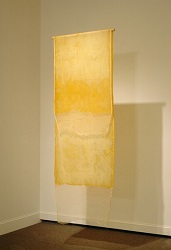 |
Eva Hesse: Unconventional and Eccentric
Despite her untimely
death at age 34, Eva Hess managed to make her mark. Her abstract
sculptures were innovative and influential. She subverted the
prevailing rigid geometry of Minimalism by introducing new
materials, new methoss, a sense of the absurd, and a whiff of
eroticism.
|
|
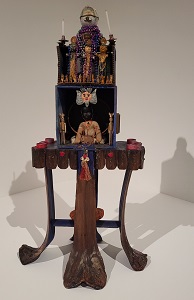
|
Betye and Alison Saar: Transforming Outrage into Art
This presentation is
about a mother-daughter pair of contemporary artists who manage
in different ways to create art that is both strong and tender.
Betye Saar assembles vintage, collected, and
found objects to make sculptures that address the denigration of
Blacks in American culture and other issues resulting ffrom
slavery. Over a long and continuing career, her goal as an
artist was "to create works that expose injustice and reveal
beauty. Alison Saar is one of the strongest sculptors working
today. She mostly carves life size figures that are pwoerful and
poignant. Like her mother, Alison likes to use scavenged
materials and deals with issues that are personal as well as
political.
|
|
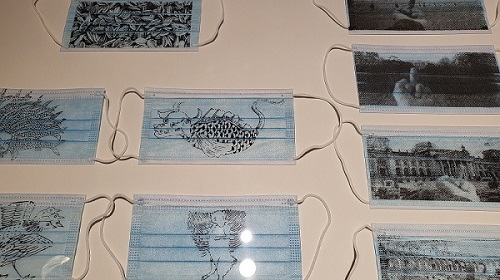 |
Ai Wei Wei:
Artist and Activist
Chinese dissident Ai
Weiwei is a conceptual artist, sculptor, architect, designer,
photographer, video maker and provocateur. He uses normal art
supplies like clay and paint but also unconventional materials
like antique Chinese urns, Lego, backpacks, and medical face
masks. Ai Weiwei’s art is the way he conducts his provocative
activism. We’ll explore the influence of Marcel Duchamp on Ai
Weiwei and the role the persecution of his famous poet father Ai
Qing played in Ai Weiwei’s career path whether it s to urge
freedom and human rights in China, or to push for accountability
for children’s deaths in an earthquake, or to highlight the
plight of refugees.
|
|

|
Henri
Matisse: The Art of Harmony
Henri
Matisse wanted to create a world of harmony and color, an art of
balance, purity, and serenity. His experiments with color pushed
the boundaries of art so far that even his patron called one of
his works "the nastiest smear of paint I have ever
seen."
|
|
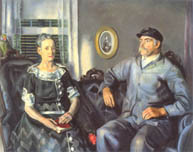
|
Painters of Urban
Life: The Ashcan School
In
the early 20th century the cities of America were expanding rapidly with
immigrants from rural areas and overseas creating a lively mix of rich
and poor, parks and tenements. Artists flocked to New York to
teach and to study. This talk focuses on those artists, such as John
Sloan, George Bellows, and Maurice Prendergast, who depicted scenes of
life in city streets, parks, and bars.
|
|
Diego
Rivera and his murals
(single talk or 2-part series)
The
greatest of the Mexican muralists called the fresco cycle he painted in
the Detroit Institute of Arts his "finest work."
We'll look in depth at the
Detroit Industry murals but also at other work by Diego Rivera as we explore his style, his life, and his ideas
using detailed illustrations.
|
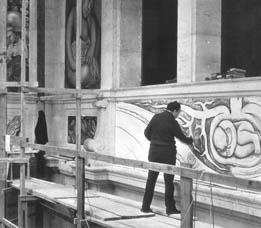
|
|
Artist
Couples: Life, Art, and
Passion
(separate talks or 3-part series)
We'll
explore the intense passions and stormy relationships of these couples
while looking at and discussing the
magnificent art they created.
There are also individual talks
available on each of these artists separately.
Camille Claudel
and Auguste
Rodin
Camille
Claudel was a 19-year-old sculptor when she met the great master
Rodin. He was captivated by her talent and strong will to become
recognized as an artist. Claudel became Rodin's muse and his
mistress. They sculpted together for the next 10
years. The richly illustrated lecture examines how each
artist's work was influenced by the passion of their relationship.
Georgia O'Keeffe
and Alfred Stieglitz
Georgia
O'Keeffe was a young art student when she met the already
internationally-famous photographer Alfred Stieglitz. Their love affair
and later marriage led to a major series of photos of her by Stieglitz
which in turn impacted how her art was viewed. His darkroom techniques
influenced her art.
Frida Kahlo
and Diego
Rivera
Theirs is a story of strong passions and incredible art.
This
presentation explores their stormy relationship while looking at the art they created throughout their
careers. Diego Rivera was famous for large public political
murals. Frida Kahlo is celebrated for small intimate personal works. But
we'll find common characteristics in their art.
|
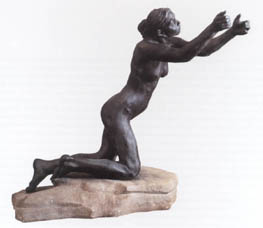 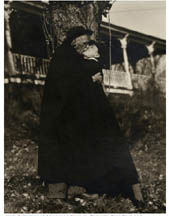 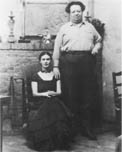
|
|
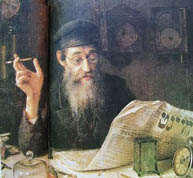 |
L'Chaim!
An Introduction to Jewish Artists
This
richly illustrated talk will cover works by a variety of Jewish artists.
The title includes the Jewish toast "To Life!" as, although
some of the artists we will be celebrating had lives that ended
tragically, they live on in their works.
We'll
discuss many artists who are internationally famous, like Marc Chagall,
Frank Gehry, Mark Rothko and Maurice Sendak but will also explore less
well-known artists whose work is well worth discovering. The Jewish
women artists have their own talk.
|
|
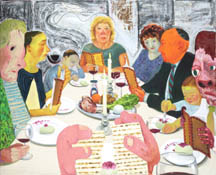
|
Above
Rubies:
Jewish Women Artists
This
talk will range from artists like Rachel Olivetti who embroidered a Torah Ark curtain in
1620 to women like Eva Hesse and Helen Frankenthalerwho helped push the
boundaries of art in the later 20th century. Many talented women artists,
like Judy Chicago, were moved more by feminism than Judaism, but that should not prevent
celebration of their unique achievements. Others
like Elaine de Kooning and Lee Krasner worked in the shadow of more
famous husbands but deserve to be better known. |
|
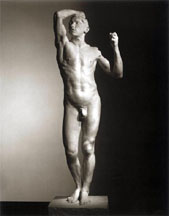
|
Triumph and
Tragedy:
The Art and
Relationship of Auguste Rodin
and Camille Claudel
Claudel was a young
sculptor when she met the great master Rodin.
He recognized her ability. She
became his muse and his mistress and they sculpted
together for the next 10 years. This talk will
examine her influence on Rodin and his on her by
looking at works inspired by the passion of their relationship.
|
|
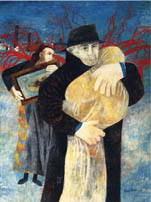
|
Ben
Shahn: Artist and Activist
Ben
Shahn was a socially aware artist famous for mixing politics with his
paint. This presentation looks at a variety of his work in a range
of media including photographs taken during the Great Depression, paintings in
the DIA, frescoes he painted or proposed for public buildings, and images
for magazines or books like the Saga of the Lucky Dragon. Along
the way we'll explore how his art reflects the ideals forged from his
experiences as a child in Russia, as an immigrant on Manhattan's
Lower East Side, and traveling round the US south during the
Depression.
|
|
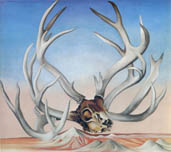
|
Georgia
O'Keeffe
O'Keeffe
was one of the first artists to experiment with abstraction in America.
Her large paintings of flowers were designed to make even busy New
Yorkers want to stop and examine them. We'll follow her long
career from her early drawings to the paintings of her beloved New
Mexico. Her obituary in the New York Times declared "Her
colors dazzled, her erotic implications provoked and stimulated, her
subjects astonished and amused."
|
|

|
Norman
Rockwell: America's Storyteller
No one has captured American
life more vividly than Norman Rockwell. This illustrated
presentation explores several of
his memorable covers for the Saturday Evening Post as
well a a selection of other work from his long and productive
career.
|
|
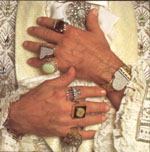
|
Annie
Leibovitz: Capturing Celebrity
Photographer
Annie Leibovitz has produced some of the most iconic and memorable
images of the last 40 years. We'll explore a rich variety of
images from the career of this celebrated artist including her most
famous covers for Rolling Stone and several photos from her book Women.
|
|

|
A Picture is Worth 1000 Words:
Jewish Photographers
Photography
began in the 1800s without a tradition or any establishment controlling
entry. Many Jews became photographers.They influenced this new art. This
single or 4 week presentation explores a variety of talented Jewish
photographers, both famous and lesser known. Some were instrumental in
getting photography accepted as an art form, some were photojournalists
and street photographers, others used photography to explore social
issues like poverty, racism, and sexual stereotypes.
|
|
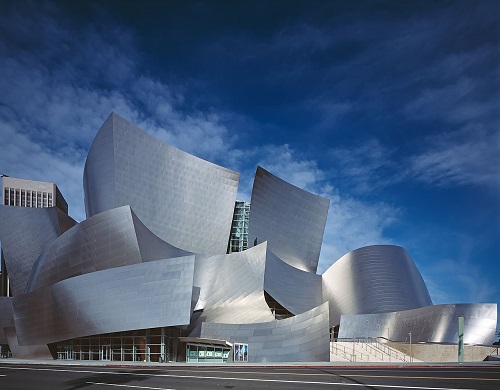
|
Jewish Architects
3 week
series or single talk on one architect
Some of the most
celebrated contemporary architects are Jewish.
This series explores the life and work
of three
of them, Frank Gehry, Daniel Libeskind, and Moshe Saftie. All
three have designed a variety
of types of buildings in many countries, including acclaimed
museums - Moshe Saftie's Crystal Bridges Museum in Bentonville,
Arkansas; Daniel Libenskind's Jewish Museum in Berlin, Germany;
and Frank Gehry's Guggenheim Museum in Bilbao, Spain.
|
Click links below to
go to:
General Topics
Art
Topics by Time Period
Talks
Focusing on Special Artists
***
Contact wendyevans@art-talks.org
to get a new topic developed for your group.
top
of page
|